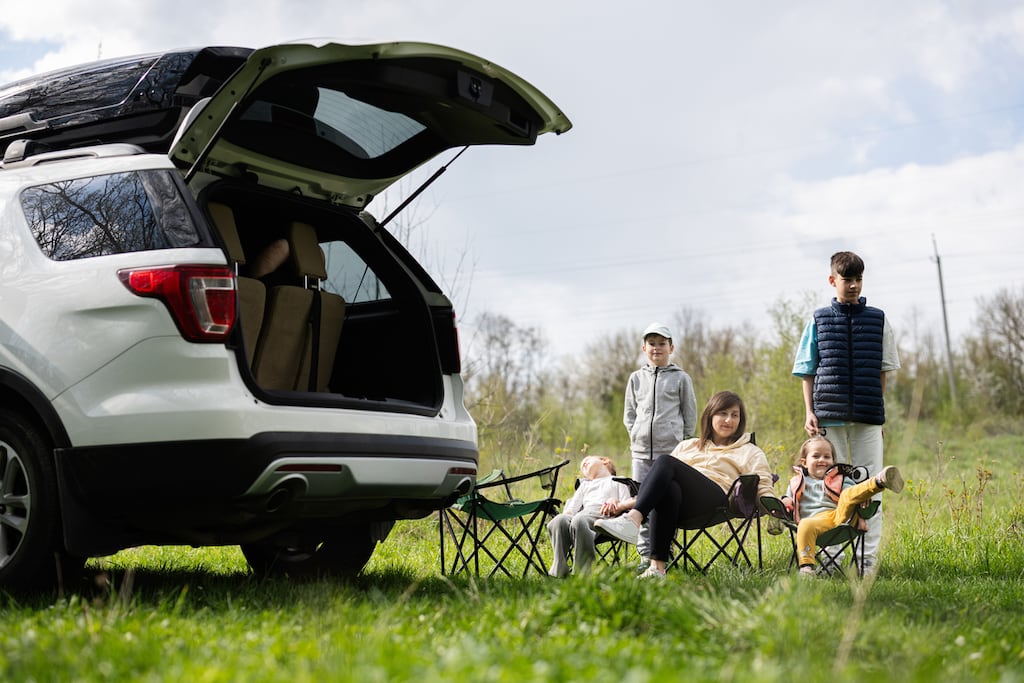Sports utility vehicles (SUVs) may not be destroyers of worlds in the apocalyptic sense imagined by Oppenheimer but they certainly aren’t helping in the battle against climate change. They are bigger and heavier, consume more fuel and produce up to 20 per cent more CO2 emissions than regular saloon cars.
According to the International Energy Agency, the amount of CO2 produced by the 330 million SUVs now on the world’s roads rose to around 1 billion tons in 2022. If SUVs were classified as a country, they would be right up there in the world’s top 10 carbon emitters.
And sales keep increasing. Last year cars broadly classified as SUVs – pejoratively known as Chelsea tractors – accounted for 58 per cent of new car sales in Ireland, up from around 16 per cent in 2012.
“For every five SUVs sold, they are producing six times the amount of emissions of regular cars,” says Prof Brian Caulfield of the TCD department of civil, structural and environmental engineering. “It means we are getting rid of the benefit of one new electric vehicle (EV). We are running to stand still.”
RM Block
Carbon emissions is not the only issue. “Because they are bigger and heavier the interaction between the tyres and the road surface creates more particulate matter and has a negative impact on air quality,” Caulfield points out. “Even an electric SUV will have that negative air quality impact. Also, should we really be putting large lithium batteries into these big vehicles? Lithium is a finite resource.
“Safety is another issue regularly raised by the cycling lobby and others. The higher driving position has an impact on blind spots and awareness of cyclists and pedestrians. In a collision between a human and an SUV, the SUV is always going to win.”
Size is the key issue, according to Hannah Daly, professor in sustainable energy and energy systems modelling at UCC.
“We know that as engines have become more efficient, most of the gains have been offset by cars getting bigger,” says Daly. “SUVs are heavier and they are higher, meaning that they use more energy to push the air out of their way.”
Caulfield laments the lack of action by the Irish Government. “It’s a bit perplexing that one of the ways to reach our 2050 decarbonisation targets is to encourage people cycle and walk everywhere and another is to move to EVs,” he says. “But there is a lack of policy on SUVs. France has brought in a vehicle weight tax. Norway did something similar. But we have radio silence from the Irish Government on the issue. They have said nothing, good, bad or indifferent.”
It would be good if media organisations would take a principled stance and not accept advertisements for high-emitting products like these
— Prof Hannah Daly, UCC
He believes the solution should begin with identification of the problem. “We should define what is meant by an SUV. We could define vehicles above a certain weight as SUVs. We could define them in terms of weight, emissions, and safety. Then we could look at what ones we want to get rid of from our streets. We could then introduce a tax like Norway and France. Fiscal interventions have been proven to be effective in the past. There are so many good reasons why we should do it.”
Tax is not the only lever, says Daly. “We need to cut car usage overall and transition away from fossil-fuel cars very quickly,” she adds. “One of the main drivers of current trends towards SUV adoption is advertising and marketing and the role of influencers. We should really treat fossil fuel cars in the same way that we treat products like cigarettes and apply health warnings to them. We should ban ads totally.
“It would be good if media organisations would take a principled stance and not accept advertisements for high-emitting products like these. The days of celebrities endorsing car brands should be brought to an end.”
There is also the phenomenon known as “autobesity” – cars getting wider and longer. A study carried out by Which in the UK has found that 150 car models are too big for standard car parking spaces – and the top three widest cars are SUVs.
“We could think about charging more for parking them,” says Caulfield. “They have introduced that in different parts of North America. There are other examples of financial measures in different parts of the world. It’s a no-brainer. Why make it harder on ourselves to reach our climate targets by selling more of these vehicles? It’s hard enough already.”
He acknowledges the cases where it may be necessary to drive an SUV. “Of course, there will be people like plumbers and electricians who need them but there can be exemptions to protect people’s livelihoods.”



















